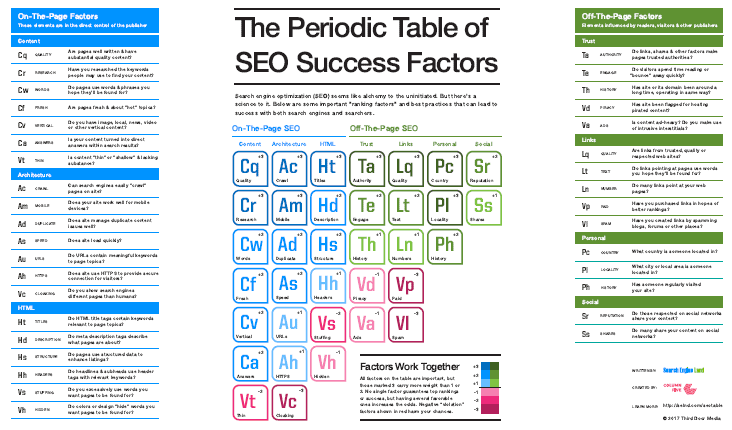Search Engine Optimization
If you own a business that relies on a website to generate sales and/or leads, then I think it is safe for me to assume that you know at least a little about Search Engine Optimization (SEO). It is more likely that you know exactly what you don’t know about it but you generally understand the overall concept of optimizing a website so that it ranks well and shows up as close to the top of search results as possible when searchers are looking for products and services.
Enter the “SEO Audit” to help clarify some of the unknowns. An SEO Audit is merely a tool that looks at certain and specific data to determine which parts of a website are in-line with current SEO best practices and which parts are not. The tool itself uses several other third party resources to assess different parts of a website…one resource looks at how fast your site loads while another resource looks to see if your pages and images have meta information (titles, descriptions, keywords, and alt text), etc. The collaborative forms a complete audit.
I want to give you a little history for education’s sake and then I want you to do a really quick exercise, please bear with me. Not too long ago when SEO was a mystical and secret art, those of us in the know did our own version of an SEO audit with whatever resources and data that were available to us. Mind you, this was not shared with the client, it was merely a road map to use so that we could manipulate and steer a website towards a higher placement in search results.
Fast forward a little to when the veil was ripped off and the actual practice of SEO and ranking “factors” were known and discussed. Many search engines like Google became a little more candid about what a website needed to be favored. Marketing agencies were forced to share a little more with their clients and SEO audits became a topic of discussion. Certain ranking “factors” emerged as best practices and technical SEO was brought into the mainstream.
Run Your Own SEO Audit
Now, the exercise if you’re willing. The image below is a link to a free (to you, not to me, we pay for the tool) SEO audit on our website. I want you to do both of these things: Run an audit on your own website, then run an audit on a competitor’s website. If you are apprehensive, then read the paragraph under the image/link below and look at the embedded actual report below that…then run the audits. When you’re done, come back and I’ll explain the value of an SEO audit and what you can now do with this valuable information.
I think a lot of people are scared to type in their information on our website form in order to receive a free SEO audit. So below I have included an actual audit, exactly like what you would receive for your own company’s website if you filled in the form and ran the audit. The report is from a local site about a local iconic restaurant/landmark, The Big Chicken in Marietta, GA. Go ahead and have a look to see what kinds of information and guidance are included in an SEO audit.
Now What?
Hopefully, you’ve run an audit and can now see the many parts of a site that constitute a “technical SEO” score. Technical means exactly that…think of each part of the audit and the checklist as a lever that must be pulled. With this understanding, you can clearly see that there are parts of your website that you can manage and improve yourself. You can write better titles, descriptions, and keywords into your meta-data with only a slight learning curve to navigate. But what about site speed and inline CSS code? Unless you want to forsake what you are doing now and become a professional web developer, tasks like these will have to be outsourced if you’re serious about improving your site’s SEO and achieving a better ranking in search engines.
Be aware that for some companies, the SEO audit is wielded like a weapon. They provide you with a complicated audit and they are counting on you to sign a contract with them based on your ignorance and/or fear of all the technical mumbo-jumbo. Equipped with a good SEO audit and with just a little bit of homework on your part, you even the playing field and you can have an educated conversation with the companies or individuals you are considering doing business with.
So that’s it. You now have a better understanding of all the parts of a website that can be added or adjusted to improve your onsite “technical” SEO. With a little more homework, you should be able to handle some of the tasks that your SEO audit highlights. If you decide that you need to outsource some of the work, you now have a better understanding and can have an educated conversation with vendors and make better choices!
If you want to discuss your own website’s SEO or you want to explore what our company can offer you, contact us today!


